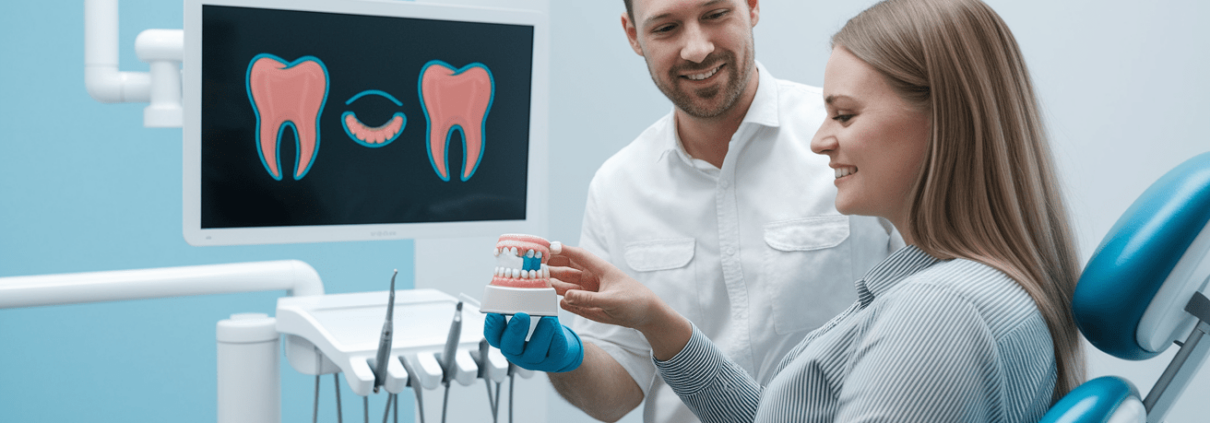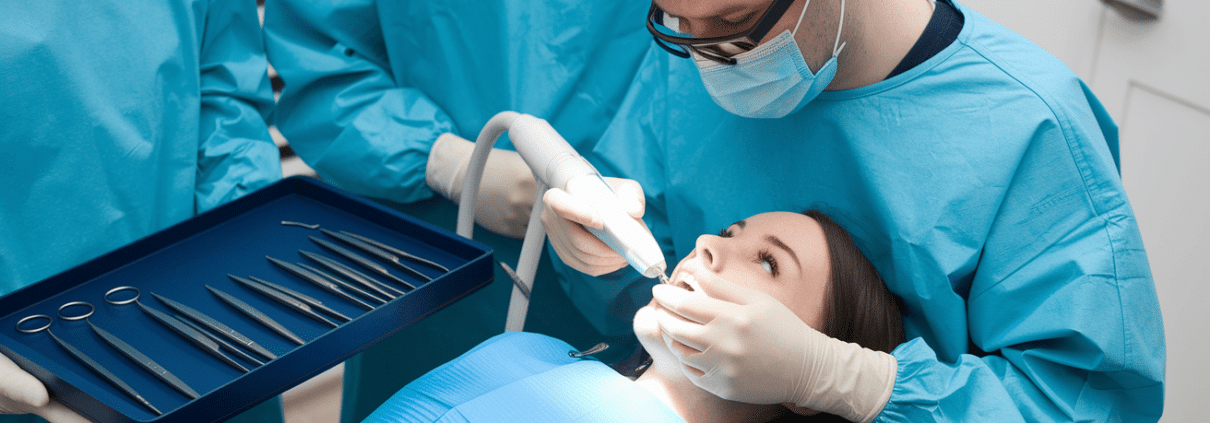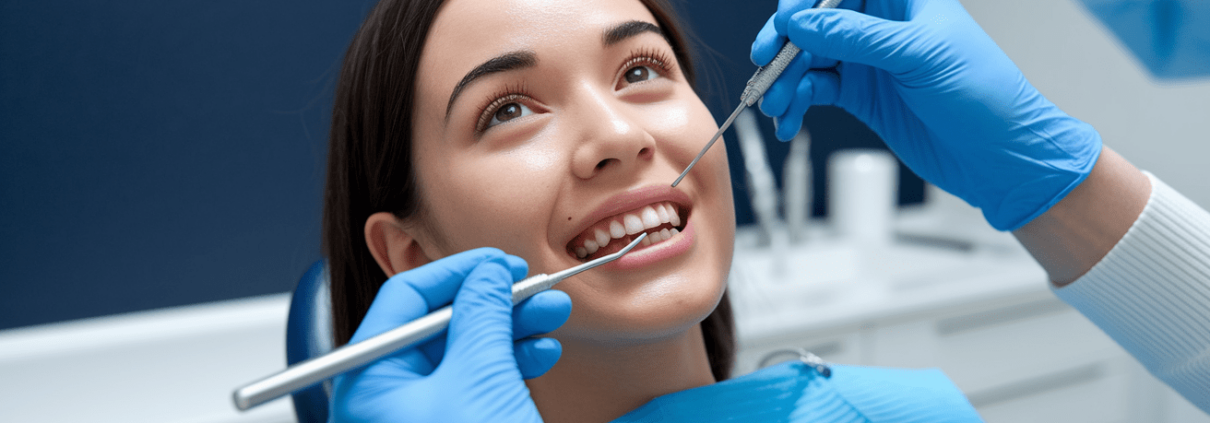If your tooth is damaged, worn down, or just plain weak, a filling might not be enough. That’s where dental crowns come in. Think of a crown as a protective helmet for your tooth—it covers the entire surface to restore strength, function, and appearance.
Whether it’s due to decay, a fracture, or cosmetic concerns, dental crowns offer a long-term solution that blends seamlessly with your natural smile. And with modern technology, getting one is faster and more comfortable than ever.
TLDR – Quick Guide
- Dental crowns are custom caps placed over damaged or weak teeth
- They restore function, protect structure, and improve appearance
- Made from materials like porcelain, ceramic, or zirconia
- Needed after root canals, large fillings, fractures, or severe decay
- Typically done in 2 visits, or same-day with CEREC technology
- Crowns last 10–15 years or more with good care
Detailed Breakdown
What Is a Dental Crown?
A dental crown is a custom-made cover that fits over an existing tooth. It restores the tooth’s shape, size, strength, and appearance while protecting it from further damage. Crowns can be made from a variety of materials, including all-porcelain, porcelain-fused-to-metal, gold, and newer options like zirconia.
When Do You Need a Crown?
Crowns are recommended when a tooth is:
- Severely decayed or broken
- Treated with a root canal
- Weakened by a large filling
- Cracked or worn down
- Visibly misshapen or discolored
Crowns also anchor dental bridges or top off dental implants.
What’s the Process Like?
Traditional crowns usually take two appointments:
- First Visit – Your dentist shapes the tooth, takes an impression, and places a temporary crown
- Second Visit – The custom crown is placed and permanently bonded to the tooth
Some offices offer same-day crowns using digital scanning and in-house milling technology like CEREC.
How Long Do Crowns Last?
With proper oral hygiene and regular checkups, most dental crowns last 10–15 years—some even longer. Avoiding hard foods and not using teeth as tools helps extend their life.
Natural Look, Durable Performance
Today’s crowns are designed to match your natural teeth in color and shape. Once placed, most patients forget they even have one. They’re strong enough to handle daily chewing and durable enough to protect even heavily damaged teeth.
Key Takeaways
- Dental crowns protect and restore damaged or weak teeth
- They are made to look and feel like your natural teeth
- The procedure is quick, with minimal discomfort
- Crowns can last well over a decade with proper care
- Ideal after root canals, fractures, or severe decay
FAQs
- Does getting a crown hurt?
No. The procedure is done under local anesthesia, so you won’t feel pain. Mild soreness afterward is normal and temporary. - How long does it take to get a crown?
Traditional crowns take two visits over a couple of weeks. Same-day crowns can be completed in one appointment. - Can crowns be placed on front teeth?
Yes. All-porcelain or zirconia crowns are commonly used on front teeth for a natural appearance. - Are crowns covered by insurance?
Most dental insurance plans cover crowns, especially if they’re medically necessary. Cosmetic-only crowns may not be covered. - What happens if my crown falls off?
Call your dentist immediately. Keep the crown safe, avoid chewing on that side, and have it re-cemented or replaced as soon as possible.
When it comes to the perfect smile, it’s not just about teeth. Your gums play a major role in how balanced and attractive your smile looks. If your gums are too high, too low, or uneven, it can throw off your entire look. That’s where gum contouring steps in.
Thanks to modern dental technology, gum reshaping is now safe, precise, and virtually painless. Whether you’re fixing a “gummy smile” or evening out the gum line, contouring gives you the symmetry and confidence you’ve been missing.
TLDR – Quick Guide
- Gum contouring reshapes the gum line for a more balanced smile
- Fixes gummy smiles or uneven gums
- Performed with laser or traditional tools—minimally invasive
- Enhances aesthetics and may improve oral health
- Usually completed in one visit with minimal recovery time
- Ideal for cosmetic and some functional corrections
Detailed Breakdown
What Is Gum Contouring?
Gum contouring, also known as gum reshaping or gingival sculpting, is a cosmetic dental procedure that sculpts the gum line to enhance symmetry and proportion. Dentists use lasers or scalpels to remove excess tissue or reshape areas where gums appear too low.
It’s commonly done to fix gummy smiles, uneven gum lines, or to expose more of the tooth for better aesthetics or restorative work.
Who Is It For?
Gum contouring is a great option for:
- Patients with a “gummy” smile
- People with an uneven gum line
- Individuals preparing for veneers or crowns
- Those wanting to balance their teeth-to-gum ratio
It’s both a cosmetic and functional solution, especially if excess gum tissue is making it harder to maintain good oral hygiene.
The Procedure: What to Expect
Gum contouring is typically done in a single visit. Here’s the process:
- Your dentist numbs the area
- A soft tissue laser or scalpel is used to sculpt the gums
- The area is cleaned and sometimes sutured (if traditional tools are used)
- You’re sent home with simple aftercare instructions
Laser contouring causes minimal bleeding and faster healing. Most patients return to normal within a few days.
Is It Painful?
Not really. Local anesthesia ensures you’re comfortable, and laser methods drastically reduce discomfort and healing time. Some tenderness is normal for 1–3 days, easily managed with over-the-counter pain relief.
Results That Speak for Themselves
Gum contouring creates instant visual improvement. Your smile looks more even, your teeth appear longer and more defined, and the overall result is cleaner and more polished. Best of all, the results are permanent.
Key Takeaways
- Gum contouring reshapes your gums to improve smile aesthetics
- It’s ideal for fixing gummy smiles and uneven gum lines
- The procedure is quick, safe, and done in one visit
- Laser techniques offer faster healing and less discomfort
- Results are dramatic, permanent, and confidence-boosting
FAQs
- How long does gum contouring take?
The procedure usually takes 30 to 60 minutes, depending on how many teeth are involved. - Is laser gum contouring better than traditional methods?
Yes. Laser techniques offer more precision, less bleeding, and a faster recovery compared to traditional scalpel methods. - Will my gums grow back after contouring?
No, the removed gum tissue does not grow back, making the results permanent. - How long is recovery after gum contouring?
Most patients recover within a few days, especially with laser treatment. Mild soreness is normal. - Is gum contouring covered by insurance?
If done for cosmetic reasons, it’s typically not covered. However, if it’s part of a medical or restorative procedure, partial coverage may apply.
Let’s be honest—nobody loves chipped teeth, small gaps, or staining that won’t go away. But that doesn’t mean you need a full smile makeover to fix it. Dental bonding offers a quick, cost-effective way to restore your smile in just one visit.
Whether you’re dealing with cosmetic flaws or minor damage, bonding can shape, color-match, and smooth your teeth to perfection. Think of it as the “instant upgrade” your smile deserves—with zero downtime and no drama.
TLDR – Quick Guide
- Dental bonding uses tooth-colored resin to repair or reshape teeth
- Fixes chips, cracks, gaps, and discoloration
- Quick, non-invasive, and completed in one visit
- Cost-effective alternative to veneers
- Results last 3–10 years with proper care
- No anesthesia required unless correcting decay
Detailed Breakdown
What Is Dental Bonding?
Dental bonding is a cosmetic procedure where a tooth-colored resin is applied, shaped, and hardened with a special light to repair minor imperfections. It’s a popular choice for patients who want to enhance their smile without committing to more invasive or expensive treatments like crowns or veneers.
What Can It Fix?
Bonding is incredibly versatile. It can:
- Repair chipped or cracked teeth
- Fill small gaps between teeth
- Cover discoloration or stains
- Lengthen short teeth
- Change the shape of misshapen teeth
- Protect exposed roots due to gum recession
It’s ideal for minor cosmetic corrections and perfect for patients looking for quick results.
The Procedure: Fast and Easy
Most dental bonding appointments take 30–60 minutes per tooth. The process involves:
- Slightly roughening the surface of the tooth
- Applying a conditioning liquid
- Sculpting and shaping the tooth-colored resin
- Hardening the resin with a curing light
- Polishing for a smooth, natural look
No drilling. No downtime. You’ll walk out with a refreshed smile.
How Long Does It Last?
With good oral hygiene and avoiding habits like nail-biting or chewing ice, dental bonding can last anywhere from 3 to 10 years. It’s not as durable as veneers, but it’s much easier to touch up or repair.
Cost-Effective and Conservative
Bonding is one of the most affordable cosmetic dental treatments. It’s also conservative—meaning it preserves your natural tooth structure. No grinding. No prep. Just results.
Key Takeaways
- Dental bonding is a fast, affordable way to fix chips, gaps, and discoloration
- It’s a non-invasive procedure that usually takes one visit
- Perfect for minor cosmetic corrections with immediate results
- Can last up to 10 years with proper care
- Great option if you want to enhance your smile without permanent alterations
FAQs
- Is dental bonding painful?
No. It’s a completely painless procedure. Anesthesia is only used if bonding is being done to fill a cavity. - How long does dental bonding last?
Typically 3 to 10 years depending on care, location in the mouth, and personal habits. - Can I eat and drink normally after bonding?
Yes, but avoid hard foods, coffee, and red wine for the first 48 hours to prevent staining or damage. - Does dental bonding stain over time?
Yes, the resin can stain, especially if exposed to coffee, tea, wine, or smoking. Regular cleanings help maintain its appearance. - Can dental bonding be redone or touched up?
Absolutely. It’s easy to repair or refresh the bonded area if it becomes worn or discolored.



